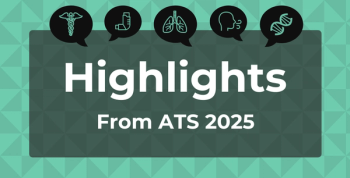
Researchers Examine Treatment Patterns Before CGRPs Came to Market
The authors said their finding that preventive medications for migraine might be underutilized surprised them, given that guidelines for migraine prevention exist in the United States, Canada, and Europe.
European researchers recently analyzed and illustrated the pattern of triptan and prophylactic medication use in order to enable future comparisons with calcitonin gene-related peptide (CGRP) inhibitors, noting that triptan users with acute severe migraine attacks represent the target population for CGRPs.
The authors said their finding that preventive medications for
The
While more than half (almost 54%) of the patients used triptans in the previous year (incident cases of triptan use, n = 4,653), 85.0% of the patients had no prescription of prophylactics (such as sibelium, topiramate, propranolol, metoprolol, botulinum toxin, and others) in the year before. Within the 12-month follow-up period, 17.4% of the triptan users were prescribed prophylactic treatment as well. About 56% of patients using triptans also used acute medication.
Among triptan users with 1 or more prophylactic prescriptions in the first quarter, 48.6% used beta-blockers, 40.7% used prophylactics other than beta blockers (eg, topiramate), and 10.7% used both. Most patients who received both beta blockers and other prophylactics in the first quarter used this drug combination continuously over all 4 quarters.
Results also showed that most patients who used “triptan and beta blockers (only)” or “triptan and other prophylactics (eg, topiramate)” at the start of the treatment in the first quarter did not continue this treatment over all other quarters. Prophylactics were prescribed only at the start of therapy in the first quarter in 25% of cases. This finding indicates low adherence to migraine preventive medication, which is in line with other studies.
The authors said the study "provides comprehensive data on treatment patterns prior to the introduction of a new drug class in migraine therapy. The majority of triptan users had no prophylactic medication therapy; however, a small, but relevant group used BB [beta blockers] and other prophylactics concurrently in all quarters. Findings quantify the population in potential need for optimized migraine therapy, ie, the potential target population of the novel CGRP-targeted drugs."
Reference
Huber CA, Agosti R, Näpflin M, Blozik E. Treatment patterns in patients using triptan and prophylactic medication: an analysis of clinical practice prior to the introduction of CGRP antagonists [published online July 19, 2019]. J Pain Res. doi.org/10.2147/JPR.S207606.
Newsletter
Stay ahead of policy, cost, and value—subscribe to AJMC for expert insights at the intersection of clinical care and health economics.








































